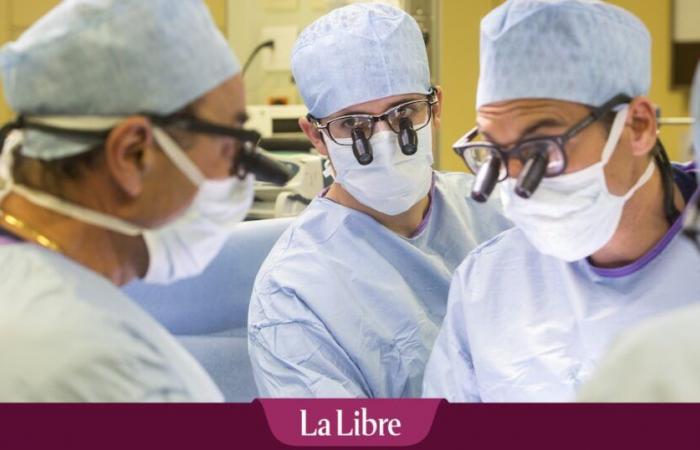“One of the most important indicators of the quality of surgery” is the mortality rate within 90 days of the operation, explains the INAMI. “”For pancreatic tumors […]this postoperative mortality is 4.4 % over all 5 years (2019-2024, editor’s note) and 3.4 % [sur] the fifth year. “ The mortality rate was still 7.3 % in the three years preceding the reform, between 2015 and 2018.
“For malignant tumors of the esophagus, this postoperative mortality is 5.9 % over all of the 5 years, and 4.0 % [sur] the fifth year. “ It was 9.6 % during the period 2015-2018.
Scientific associations have emerged
Progress is therefore significant and confirm the first assessment of the reform published in December 2023. What is also interesting to note is that the mortality rate decreases over the years, as it is harvested the fruits of the concentration of care.
The chances of survival after an operation for cancer of the esophagus or pancreas have significantly increased in Belgium
The interest of the concentration of care, which still implies a loss of proximity for patients, is above all a concentration of expertise. To put it simply, we can consider that at most a surgery service performs operations and is faced with cases, the most it will be efficient.
towerThe initiatives that we have started must be more materialized and extended. I am thinking for example of the concentration of care for ovary tumors.
“In addition to these results, other positive developments” were noted, “as the creation of scientific associations “one for the pancreas, the other for the esophagus, notes the inami. “”These associations meet regularly to approach specific subjects related to surgery, exchange experiences and offer new research issues. The national results are also discussed there to be able to identify improvement points and treat them, such as interventions to reduce the risk of complications. “
-Frank Vandenbroucke multiplies projects
Convinced, Minister Vandenbroucke has multiplied concentration projects in recent times and he intends to continue on this path. Since August 1, 2024, breast cancers are only treated in approved clinics. Likewise, the number of hospitals specializing in the treatment of pediatric cancers will go from seven to three from 2027.
There will only be three reference hospitals for children’s cancers in 2027, against seven today: “This will improve care”
In his presentation presentation presented in mid-March in parliament, the socialist indicated that “The initiatives that we have started during the previous legislature concerning the concentration of care for head and neck tumors, pediatric oncology or major trauma centers must be more materialized and, if necessary, extended. I am thinking for example of the concentration of care for the ovary tumors. “
Frank Vandenbroucke: “The proximity of hospital care where it is possible, concentration where it is necessary”
Reference centers, he also explained, are designated “Based on the objective criteria of quality and quantity and both university hospitals and general hospitals will be able to claim these reference functions “.
This concentration does not mean that patients and their loved ones must travel dozens of kilometers for the slightest medical meeting linked to their pathology. Reference centers are responsible for making the diagnosis, establishing a processing plan, or even carrying out complex operations and care. The other hospitals can continue to provide part of the treatment, such as chemotherapy, or take charge of revalidation or even palliative care.








